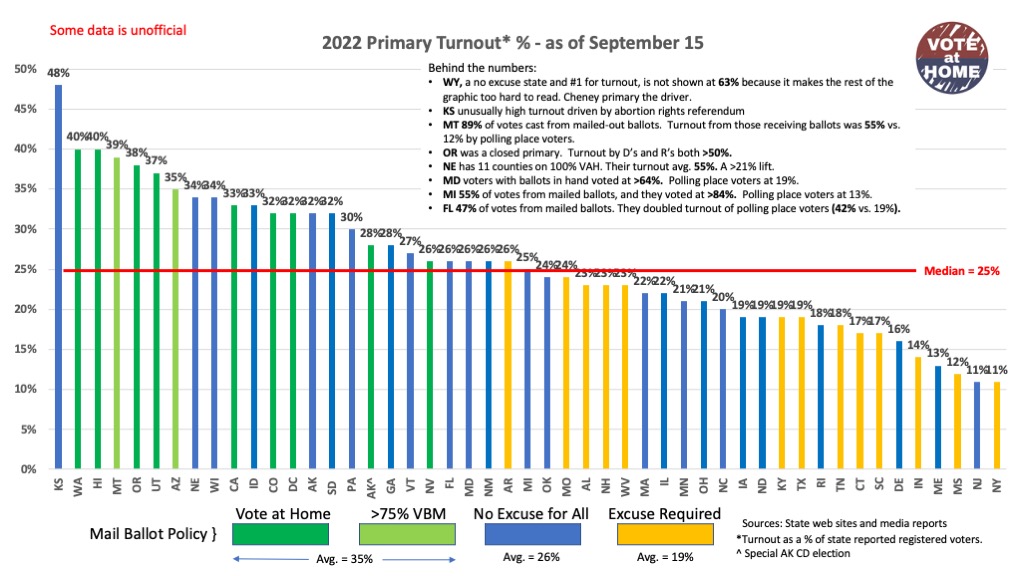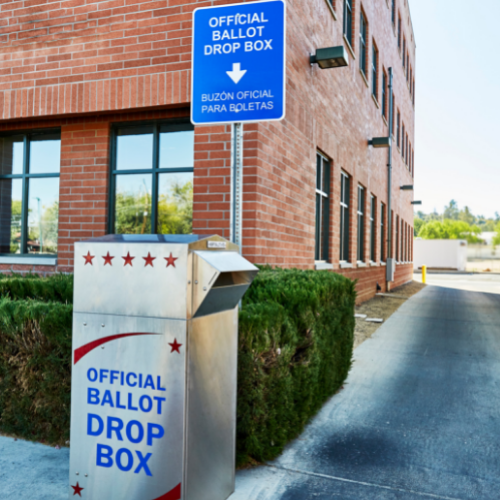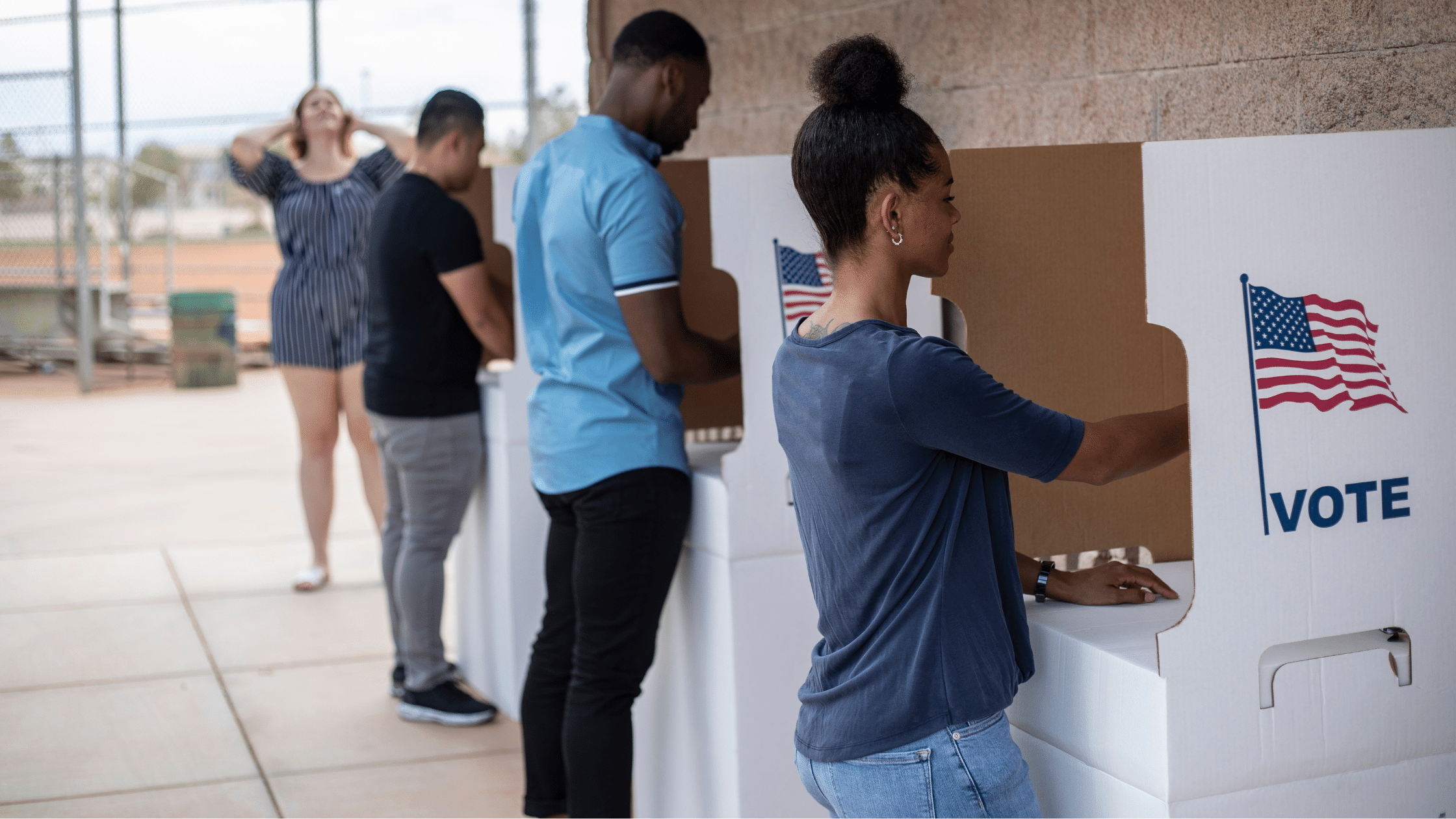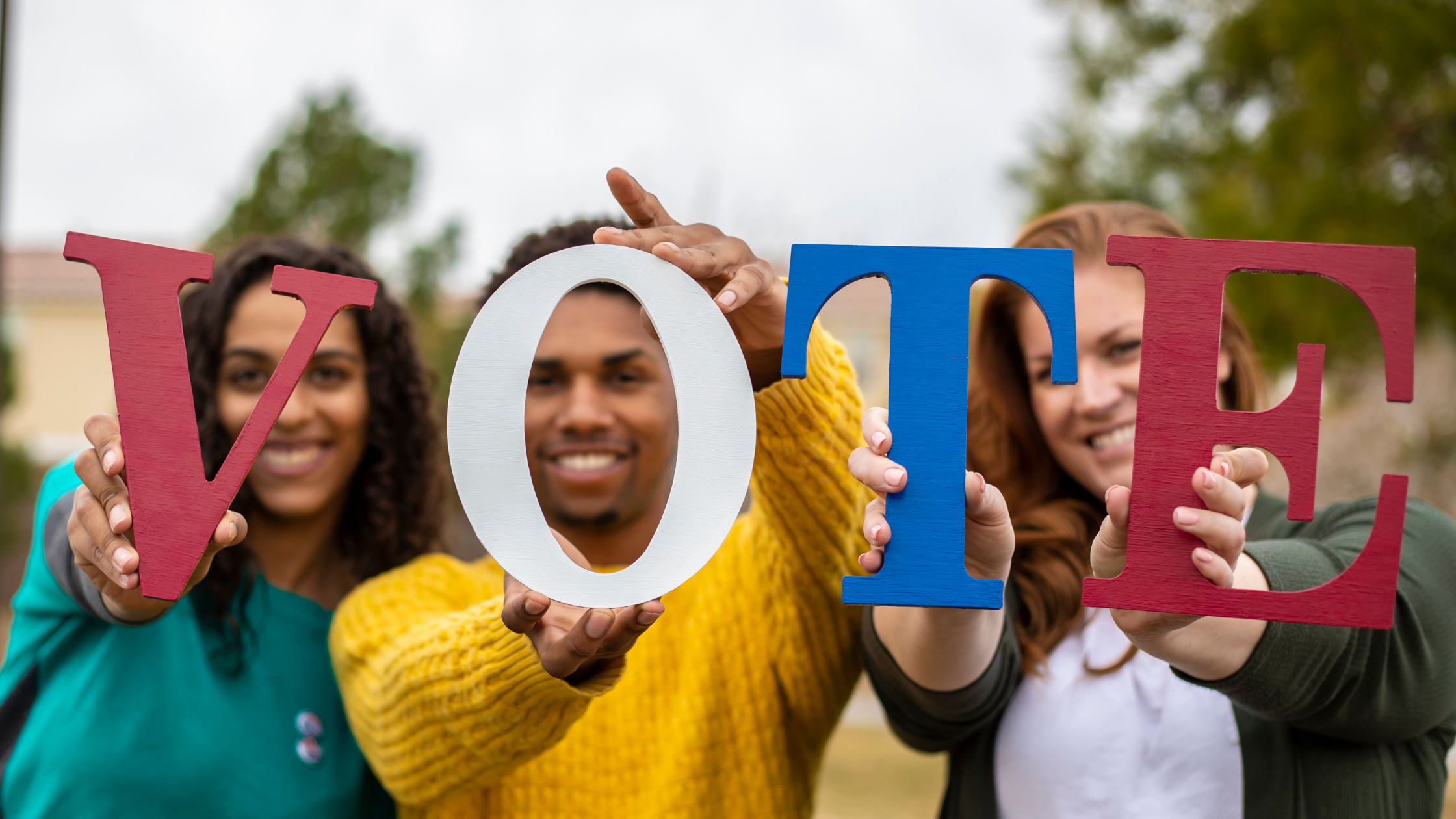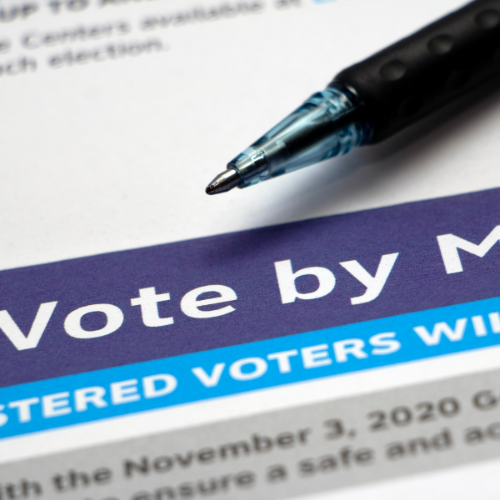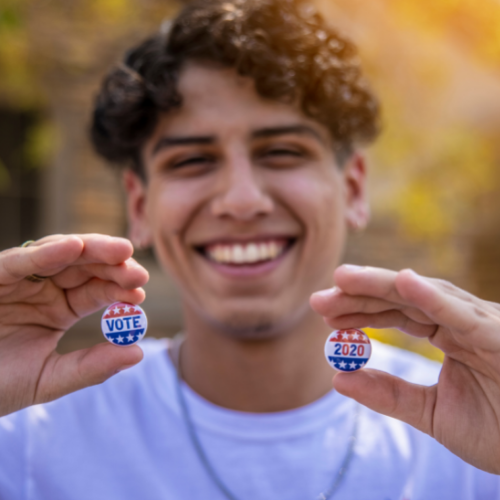Since 2020, mail-ballot use has been on the rise across the U.S., resulting in more voters having access to the ballot box. The 2022 primary elections were no exception.
Effect of Mail Applications and Ballots in Nebraska’s 2020 General Election in
In this research prepared for the National Vote at Home Coalition, researchers find that full vote-at-home precincts in Nebraska experienced as much as 4.6 percentage points of greater turnout than polling-place precincts. In addition, automatically mailing absentee ballot applications to all voters helped increase turnout across the state.
Vote at Home Policy and the 2020 Presidential Election
A recent study of mail-ballot use and voter participation found that turnout increased an average of 5.6% during the 2020 presidential election in states that mailed a ballot to every registered voter. The effects of mail-ballot delivery were even greater in jurisdictions with historically low mail-ballot usage, boosting turnout by as much as 8%.
How Lines at the Precinct Depress Future Turnout
Researchers have increasingly paid attention to the impact that the administrative component of elections has on voter behavior. Existing research has focused almost exclusively on the effect that legal changes–such as voter identification laws–have on turnout. This paper extends our understanding of the electoral process by exploring how one aspect of the precinct experience–standing in line to vote–can shape the turnout behavior of voters in subsequent elections. I demonstrate that for every additional hour a voter waits in line to vote, their probability of voting in the subsequent election drops by 1 percentage point. To arrive at these estimates, I analyze vote history files using a combination of exact matching and placebo tests to test the identification assumptions. I then leverage an unusual institutional arrangement in the City of Boston and longitudinal data from Florida to show that the result also holds at the precinct level. The findings in this paper have important policy implications for administrative changes that may impact line length, such as voter identification requirements and precinct consolidation. They also suggest that racial asymmetries in precinct wait times contribute to the gap in turnout rates between white and non-white voters.
State-by-State 2020 Youth Voter Turnout: The Northeast
From the Center for Information and Research On Civic Learning and Engagement:
Our final analysis of statewide youth voter turnout by region examines the electoral participation in young people in nine Eastern and Northeastern states. Key takeaways from this group of states include:
- New Jersey had the highest youth voter turnout in the nation: 67%.
- Despite being the only major swing state in the region, Pennsylvania had a similar youth voter turnout rate (54%) to other states in the East and Northeast. Perhaps relatedly, it’s the only state in the region (for which we have turnout data) without either pre-registration or automatic voter registration.
- Vermont and New Jersey which implemented full vote by mail programs in which they automatically sent ballots to every voter, saw the biggest increases in youth voter turnout compared to 2016: rising by 12 and 22 percentage points, respectively.
Does Voting by Mail Increase Fraud? Estimating the Change in Reported Voter Fraud When States Switch to Elections By Mail
U.S. voters recently participated in the 2020 general election, which determined the next president as well as other public officials at the federal, state, and local level. While Election Day was officially Tuesday, November 3, many voters cast their ballots early—either in person or by mail. This article examines the claim that states can expect more cases of voter fraud when ballots are distributed by mail. It does not consider the consequences of early in-person voting or other challenges facing voting by mail, such as the timeliness of the U.S. Postal Service or the reporting of election results. Nor does it consider whether voters are more likely to incorrectly mark their ballots or whether election workers are more likely to incorrectly reject ballot.
National Data on the Impact of Mail Voting on the 2020 Presidential Election
BallotTrax, which offers a mail ballot locator and notification system, found that BallotTrax users nationwide saw a greater than 20% increase in voter turnout during the 2020 presidential election.
How Greater Mail Voting Influences California Voter Turnout
Researchers explore the effects of California’s Voter’s Choice Act (VCA), a reform adopted by 15 counties at the time that implements vote-by-mail countywide, on voter turnout. Findings indicate that, in general, turnout is higher in VCA counties.
The participatory and partisan impacts of mandatory vote-by-mail
Policy-makers disagree on the merits of mandatory vote-by-mail. Many of these debates hinge on whether mandatory vote-by-mail advantages one political party over the other. Using a unique pairing of historical county-level data that covers the past three decades and more than 40 million voting records from the two states that have conducted a staggered rollout of mandatory vote-by-mail (Washington and Utah), researchers used several methods for causal inference to show that mandatory vote-by-mail slightly increases voter turnout but has no effect on election outcomes at various levels of government. Their results find meaning given contemporary debates about the merits of mandatory vote-by-mail. Mandatory vote-by-mail ensures that citizens are given a safe means of casting their ballot while simultaneously not advantaging one political party over the other.
Universal Vote-By-Mail Has No Impact on Partisan Turnout or Vote Share
From the authors: “In response to COVID-19, many scholars and policymakers are urging the United States to expand voting-by-mail programs to safeguard the electoral process, but there are concerns that such a policy could favor one party over the other. We estimate the effects of universal vote-by-mail, a policy under which every voter is mailed a ballot in advance of the election, on partisan election outcomes. We find that universal vote-by-mail does not affect either party’s share of turnout or either party’s vote share. These conclusions support the conventional wisdom of election administration experts and contradict many popular claims in the media. Our results imply that the partisan outcomes of vote-by-mail elections closely resemble in-person elections, at least in normal times.”

